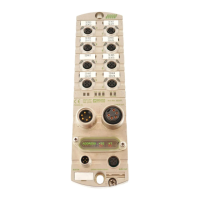Manual MVK-MP
V 3.5 9
2.2 Electromagnetic Compatibility (EMC)
This device meets the requirements of EC Directive 2004/108/EEC "Electromagnetic
Compatibility".
The device is Class A equipment. It may cause radio-frequency interferences in
residential areas. In this case, the operator may be required to implement adequate
countermeasures.
The devices described in this manual each meet the relefant standards for electromagnetic
compatibility. However, this does not mean that their electromagnetic compatibility is still guaranteed
when installed in a plant or machine.
For this reason, we urgently advise you to comply with the instructions on installation in accordance with
EMC requirements below. Only then can you assume that the overall system complies with EMC
requirements, provided CE-marked components are used exclusively.
2.2.1 Protection against Electrostatic Discharge
The products described in this manual contain complex semiconductor components which may be
destroyed or damaged by electrostatic discharge (ESD).
Damage does not necessarily lead to immediate, detectable failure, or malfunction. These states may
be even delayed, or occur sporadically.
The generally accepted safety precautions for ESD sensitive devices must be observed when handling
the devices. The following precautions must be taken:
Never plug or unplug connectors while the equipment is under power.
If you are an operator, discharge any static charge you may be carrying just before
you touch the equipment. For example, you can touch a grounded part of the
machine, or wear an ESD discharge strap that is permanently connected to
ground.
2.2.2 Grounding
A short low-impedance connection (max. 10 cm) between the grounding point and the reference ground
is essential to divert interference voltages running between the device and reference ground.
The inductivity of standard FE conductors is a high impedance for high-frequency interference voltages.
For this reason, the use of grounding straps is advisable. If this is not possible, a fine-wire FE conductor
should be selected with the largest possible cross section, and the connection to ground should be kept
as short as possible.

